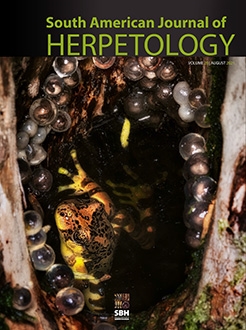The peak of activity of Bothrops jararaca is in the rainy season. This pitviper feeds mainly on small mammals and is preyed upon by several avian and mammal predators. However, the association between jararaca's seasonal activity with that of their prey and predators remains unknown. The present study tested the hypothesis that the peak activity of B. jararaca coincides with that of their prey and predators, mainly due to favorable climatic conditions during this period. Snake activity was inferred from standardized searches and animals deposited in herpetological collections. Seasonal activity of prey was inferred from monthly sampling carried out over one year using pitfall and Sherman traps. Plasticine models were used to infer predation risk. Analyses of predator and prey abundance were performed, taking into account climatic variables, and models explaining this relationship were proposed. Activity of both B. jararaca and its prey was higher in the rainy season. Activity of the latter was positively correlated with temperature and rainfall. Predator activity, however, was higher in the dry season and negatively correlated with temperature and rainfall but positively correlated with humidity. The peak activity of B. jararaca in the rainy season might favor foraging activities, since this period coincides with greater prey abundance and decreased predation risk. During the dry season when resource availability is low, predators feed opportunistically, encountering dangerous prey such as B. jararaca. In summary, the activity pattern showed by the snake clearly increases its survival.
How to translate text using browser tools
21 June 2021
Seasonal Activity of Bothrops jararaca (Serpentes, Viperidae): Optimizing Foraging while Avoiding Predators
Lucas H.C. Siqueira,
Karina R.S. Banci,
Otavio A.V. Marques
ACCESS THE FULL ARTICLE
food
Plasticine models
predation
rodents
Seasonality
snake





